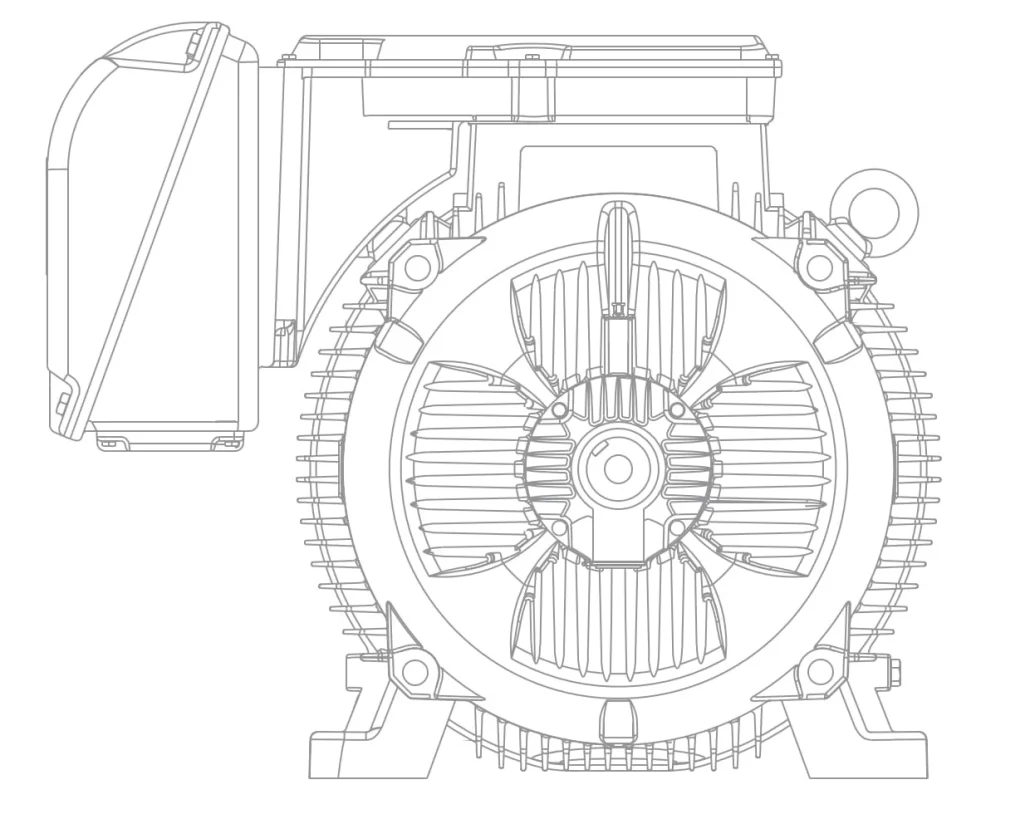Motor Starting Phenomenon
The three-phase induction motors represent the most significant load in the industrial plants, over the half of the delivered electrical energy. Motor loads specially the medium and large size ones, require high amount of reactive power for a short period during their startup. The high reactive power drawn from the system causes voltage dips at startup time and potentially overvoltage after motor startup is over. The voltage dip and overvoltage may cause protection relays to trip and the system to go unstable. The power factor is low (around 10 to 20%) and a high current is drawing, commonly 6-10 times the rated value causing this undesirable effect.
There are several solutions to minimize this problem, the most common are:
Comparison of Common Motor Starting Methods
| Type of Starter | Motor Terminal Voltage Percent Line Voltage |
Starting Torque Percent Full Voltage Starting Torque |
Starting Current Percent Full Voltage Starting Current |
|---|---|---|---|
| Full Voltage Starter | 100 | 100 | 100 |
| Autotransformer | |||
| 80% Tap | 80 | 64 | 68 |
| 65% Tap | 65 | 42 | 46 |
| 50% Tap | 50 | 25 | 30 |
| Resistor Starter, single step (adjusted to motor terminal voltage of 80% x full voltage) | 80 | 64 | 80 |
| Reactor | |||
| 50% Tap | 50 | 25 | 50 |
| 45% Tap | 45 | 20 | 45 |
| 37.5% Tap | 37.5 | 14 | 37.5 |
| Part-winding starter (Low Speed Motors Only) | |||
| 75% Winding | 100 | 75 | 75 |
| 50% Winding | 100 | 50 | 50 |
Variable Frequency Drives (VFD)
Most motors are designed to operate at a constant speed and provide a constant output; however, modern technology requires different speeds in many applications where electric motors are used.
Variable frequency drive (VFD) is a device that uses power electronic components (Rectifier, DC Bus and Filter, Inverter, Control Unit etc.) to control the motor speed by changing the frequency of input power of the motor. Effects of applying VFDs are in both productivity improvements and energy savings in pumps, fans, compressors and other equipment.
VFDs are reliable and cost effective means to control the speed of electrical motors. Installing VFDs on electrical motor applications improves the efficiency of the systems and saves a huge amount of energy. They require little maintenance, provide the most energy efficient capacity control, have the lowest starting current of any starter type, and reduce thermal and mechanical stresses on motors and belts. In addition, they protect the motor while keep the process running, reduce pump failure caused by pump cavitations, and reduce maintenance on piping and valves. Applying VFDs to the HVAC systems and compressed air provide excellent opportunities to reduce the energy consumptions. VFDs are an option to match the required loads thus savings energy and improve the economical features of motors.
Current and voltage harmonics in the AC supply are created by VFD (as a nonlinear load) connected on the power distribution system. Harmonics pollute the electric plant, which cause problems if harmonic level increases beyond a certain level. Harmonic currents provide useless power. The effects of harmonics are overheating of transformers, cables, motors, generators, and capacitors. Large harmonics lead to increase factory downtime and operating costs. There are significant changes in waveform distortion at different speeds and torque levels in the operation of VFDs. Current waveform distortion is injected back into the power supply system creating several problems such as increase in the electrical losses on the network side of the transformer, decrease efficiency of motor, nuisance tripping of circuit breakers, malfunction or failure of electronic circuits, erroneous reading of metering devices, de-rating of fuses as a result of additional heat generated, and decrease life expectancy of equipment.
